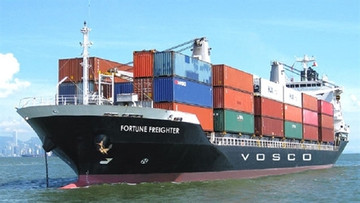- © Copyright of Vietnamnet Global.
- Tel: 024 3772 7988 Fax: (024) 37722734
- Email: [email protected]
green growth
Update news green growth
Prime Minister presides over national COP26 Steering Committee on green growth
Vietnam's favourable natural conditions for renewable energy, as well as the requirements of green standards in the European export markets, drive the country towards green transformation.
High costs setback to green transition in VN maritime transportation
From January 1, it is mandatory for all vessels to initiate the collection of data for the reporting of their CII and CII ratings.
Vietnam has opportunity for energy transition towards green growth
Vietnam boasts substantial potential for wind power, particularly offshore wind power, providing an opportunity for the country to fulfill its energy transition target towards green growth.
National steering committee on green growth established
Prime Minister Pham Minh Chinh has signed a decision on establishing a national steering committee on green growth, which is led by Deputy Prime Minister Le Van Thanh.
Businesses set urgent goals to cut carbon emissions
A representative of Nestlé Group says that the company has announced a commitment to achieve net zero emissions by 2050.
Attracting 'clean' investment capital to Vietnam
Green industries are expected to implement sustainable development goals, and help the national strategy on green growth in 2021-2030 and Vietnam’s commitment to achieve net zero emissions by 2050.
Vietnam needs extra US$368 billion to achieve net zero emissions
As the energy industry has a crucial role in achieving net zero emissions by 2050, it requires a structural transition toward green growth. Therefore, Vietnam needs assistance from developed countries regarding both financial and technical issues.
Vietnam to mobilise $360 billion for sustainable development targets
Vietnam needs to mobilise $360 billion for implementing its green and sustainable development targets by 2030.
Wind power fuels green growth in Vietnam: IFC
Despite Vietnam’s huge potential, by the end of 2020, wind power accounted for less than 1 per cent (or 670MW) of the nation’s total installed capacity.
New green growth strategy to promote carbon-neutral economy
The Ministry of Planning and Investment is drafting a national strategy on green growth for 2021-30.
New strategy to place priority on green growth
The Ministry of Planning and Investment is drafting a national green growth strategy and plans to submit it to the Government by June to accelerate the transition towards a carbon-neutral economy in Vietnam.
Green credit takes off in Vietnam
 National green credit programs will help Vietnam reach its goals in the national green development strategy in a comprehensive way and help drive the economy towards sustainable development.
National green credit programs will help Vietnam reach its goals in the national green development strategy in a comprehensive way and help drive the economy towards sustainable development.
Initial costs in green apartments offset later
 Developers are moving towards sustainable development by promoting green apartment buildings but there are issues to surmount.
Developers are moving towards sustainable development by promoting green apartment buildings but there are issues to surmount.
Vietnamese-German negotiations on green growth end in success
 Germany and Vietnam decided to expand the co-operation in future-oriented fields such as vocational training, energy, and environment.
Germany and Vietnam decided to expand the co-operation in future-oriented fields such as vocational training, energy, and environment.
Adjustments to overall planning of Ha Long city announced
 The People’s Committee of Ha Long city in the northern coastal province of Quang Ninh announced adjustments to the city’s overall planning to 2040 with a vision to 2050 at a conference on August 12.
The People’s Committee of Ha Long city in the northern coastal province of Quang Ninh announced adjustments to the city’s overall planning to 2040 with a vision to 2050 at a conference on August 12.
Building on the nation’s green strategies via international co-operation
 Vietnam has been implementing its National Green Growth Strategy since 2012 and its Action Plan on Green Growth since 2014, with great support from the private sector and international partners.
Vietnam has been implementing its National Green Growth Strategy since 2012 and its Action Plan on Green Growth since 2014, with great support from the private sector and international partners.
Local developers unlock power of green building
 Green building represents one of the most significant opportunities for sustainable growth at both the national and global levels, and local developers have begun paying more attention to this concept.
Green building represents one of the most significant opportunities for sustainable growth at both the national and global levels, and local developers have begun paying more attention to this concept.
Energy efficiency turns SMEs into success story
Amid the spiralling ramifications of climate change in Vietnam, energy-saving and CO2-reducing technologies have proven an inevitable trend for small- and medium-sized enterprises.Bich Thuy reports.
Green growth- a magnet for foreign investors
Green development projects in Vietnam are catching attention of foreign investors on account of the Government’s favourable policies on land, taxes and capital as well as a large number of potential customers in the country.
Vietnam commits to green growth
VietNamNet Bridge – Urbanisation in Viet Nam reached 15 per cent growth – a double increase over past two decades, making a 75 per share of the country’s Gross Domestic Product, but it needs a big change in earning ‘green growth’



















